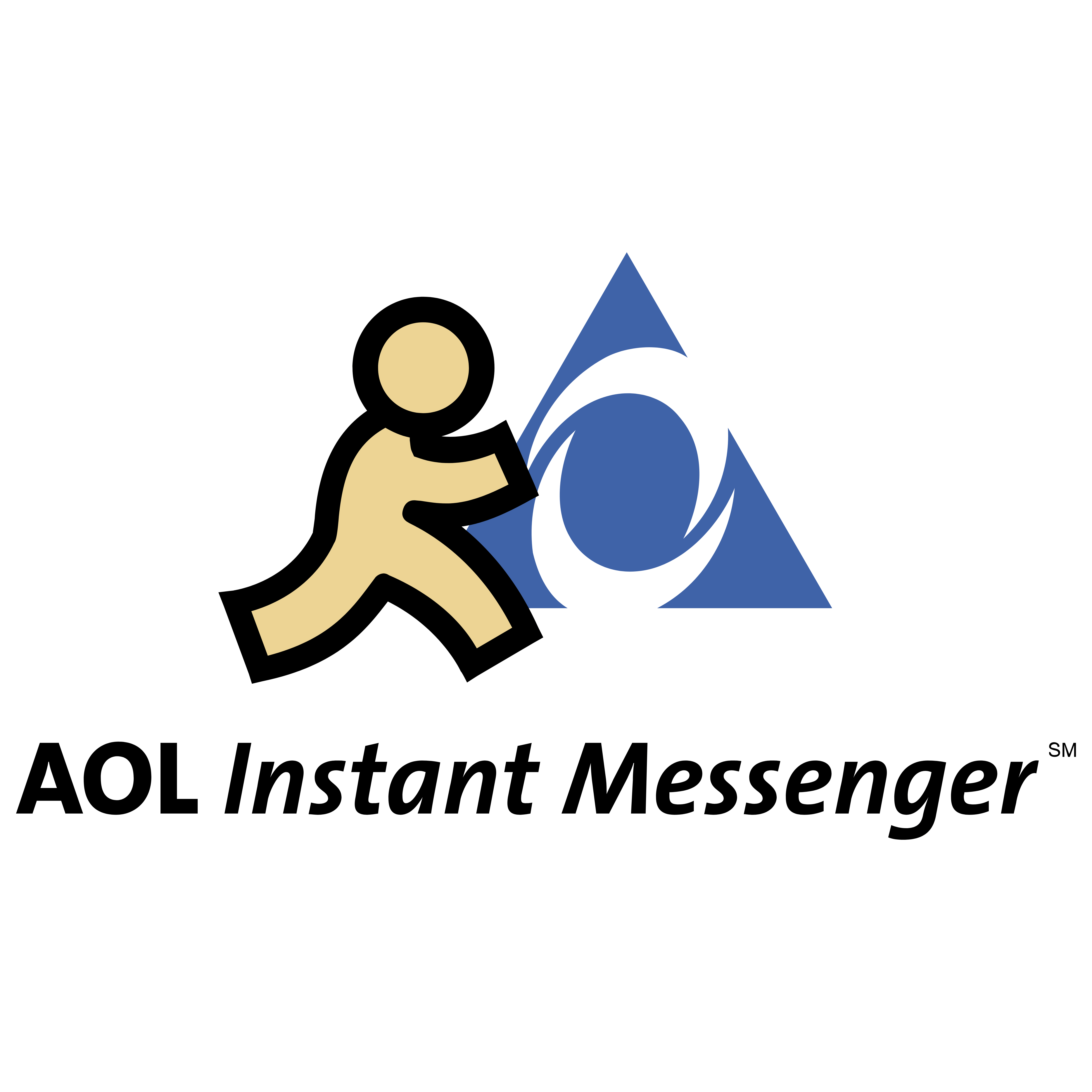Remember the days when AOL ruled the world of online messaging? The iconic "You've Got Mail!" notification was more than just a sound—it was a cultural phenomenon that shaped how we communicate digitally today. Messaging AOL style isn't just about nostalgia; it's about understanding the foundation of modern communication tools. Whether you're a millennial or a Gen Z'er, diving into AOL's legacy can give you a fresh perspective on how far we've come and what we've left behind.
Back in the late '90s and early 2000s, AOL was the king of the internet. It wasn't just an email service; it was a full-fledged platform that brought people together in ways that were revolutionary at the time. From chat rooms to instant messaging, AOL offered a space where people could connect, share, and build communities. This is where the roots of today's social media platforms truly began to take shape.
So, why does messaging AOL style matter today? Well, it's not just about reminiscing about the past. Understanding the principles of AOL's approach to communication can help us appreciate the simplicity and intimacy of one-on-one interactions in an era dominated by group chats and algorithm-driven feeds. Let's dive in and explore what made AOL so special—and how its legacy continues to influence the way we communicate online.
- Unveiling The Mysteries Of Your Star Sign On 18 June
- Xmas Tree Oil And Gas The Ultimate Guide To Understanding This Energy Marvel
Table of Contents
- The History of AOL Messaging
- Biography of AOL's Rise and Fall
- Key Features of AOL Messaging
- Impact on Modern Communication
- Nostalgia and Modern Messaging
- Statistics and Trends
- Comparison with Today's Messaging Apps
- Security and Privacy in AOL Messaging
- The Future of Messaging AOL Style
- Conclusion: Why Messaging AOL Style Still Matters
The History of AOL Messaging
AOL, or America Online, started out as a humble online service provider back in 1985. At the time, the internet wasn't exactly mainstream, and most people didn't even know what it was. But AOL changed all that. By offering a user-friendly interface and a subscription-based model, AOL made the internet accessible to the average Joe. And let's not forget the free trial CDs they mailed out like crazy—those were everywhere!
By the late '90s, AOL had become a household name. Its messaging service, AOL Instant Messenger (AIM), was a game-changer. AIM introduced features like buddy lists, away messages, and customizable profiles, all of which were unheard of at the time. It was like having your own personal digital space where you could express yourself and connect with others. People spent hours chatting with friends, making new ones, and even falling in love—all through the power of AOL's messaging platform.
How AOL Revolutionized Communication
Before AOL, communication online was clunky and often limited to email or bulletin boards. AIM changed all that by introducing real-time messaging. Suddenly, you could have conversations with people across the globe as if they were sitting right next to you. It was a revelation, and it set the stage for the messaging apps we use today.
- Gumball And Nicole The Ultimate Adventure Of Friendship And Fun
- Cincinnati Reds 2024 Schedule Your Ultimate Guide To The Season
Biography of AOL's Rise and Fall
AOL's journey is one of triumph and tragedy. At its peak in the early 2000s, AOL had over 26 million subscribers and was one of the most valuable companies in the world. But as the internet evolved and new players like Google and Facebook entered the scene, AOL struggled to keep up. Its business model, which relied heavily on subscription fees, became outdated in an era where free services were the norm.
Despite its decline, AOL left an indelible mark on the digital landscape. Its legacy lives on in the features and functionalities that modern messaging apps have adopted. Even today, when you send a message on WhatsApp or Slack, you're experiencing the evolution of what AOL pioneered decades ago.
Data and Facts About AOL
| Fact | Detail |
|---|---|
| Founded | 1985 |
| Peak Subscribers | 26 million+ |
| Revenue in 2000 | $10 billion+ |
| Key Product | AOL Instant Messenger (AIM) |
Key Features of AOL Messaging
AOL Instant Messenger was packed with features that made it a favorite among users. Let's take a closer look at what made AIM so special:
- Buddy Lists: Your personal contact list where you could see who was online and available to chat.
- Away Messages: A precursor to today's status updates, away messages let others know what you were up to when you weren't at your computer.
- Customizable Profiles: Express yourself with unique avatars, backgrounds, and personal details.
- Chat Rooms: Join discussions on a wide range of topics with people from all over the world.
These features may seem basic by today's standards, but back then, they were groundbreaking. They allowed users to create a digital identity and connect with others in ways that were previously impossible.
Impact on Modern Communication
The influence of AOL's messaging style can be seen in virtually every messaging app we use today. Platforms like WhatsApp, Telegram, and Slack have all adopted elements of AIM's design and functionality. For example, the concept of a buddy list has evolved into contact lists, and away messages have become status updates. Even the idea of chat rooms lives on in group chats and forums.
But AOL's impact goes beyond just features. It helped shape the way we think about communication in the digital age. It taught us the importance of personalization, privacy, and community in online interactions. These lessons continue to guide the development of messaging tools today.
Lessons Learned from AOL
One of the biggest takeaways from AOL's rise and fall is the importance of adapting to change. In an industry that moves as fast as technology, staying relevant is crucial. AOL failed to evolve with the times, and that ultimately led to its decline. Modern companies can learn from this by staying flexible and open to innovation.
Nostalgia and Modern Messaging
For many people, AOL messaging is more than just a tool; it's a memory. It reminds us of simpler times when communication was more personal and less about algorithms. There's something comforting about the idea of sitting at your computer, waiting for that familiar ding that meant someone was trying to reach you.
Today, messaging apps are all about speed and efficiency. While that's great for productivity, it can sometimes feel impersonal. That's why there's been a resurgence of interest in AOL-style messaging. People are craving a return to the intimacy and connection that AIM offered.
Why Nostalgia Matters
Nostalgia isn't just about looking back; it's about understanding where we came from and how it shapes where we're going. By revisiting the principles of AOL messaging, we can create better, more meaningful communication tools for the future.
Statistics and Trends
According to recent studies, messaging apps are more popular than ever. In fact, over 2.5 billion people worldwide use messaging apps regularly. That's a staggering number, and it shows just how important digital communication has become in our daily lives.
But what does this mean for AOL's legacy? Well, it means that the principles of messaging AOL style are still relevant today. While the platforms may have changed, the core ideas of personalization, community, and connection remain the same.
Key Statistics
- Over 2.5 billion people use messaging apps globally.
- WhatsApp has over 2 billion active users.
- Telegram has seen a surge in popularity, with over 700 million users.
Comparison with Today's Messaging Apps
While today's messaging apps offer a wide range of features, they often lack the simplicity and intimacy of AOL's approach. Apps like WhatsApp and Telegram are great for group chats and large-scale communication, but they can sometimes feel impersonal. That's where AOL-style messaging shines. It reminds us of the importance of one-on-one interactions and personal connections.
That's not to say that modern apps don't have their advantages. They offer features like end-to-end encryption, file sharing, and integration with other services that AOL could only dream of. But by combining the best of both worlds, we can create messaging tools that are both powerful and personal.
Pros and Cons of Modern Messaging
- Pros: Advanced features, security, scalability.
- Cons: Can feel impersonal, overwhelming with notifications.
Security and Privacy in AOL Messaging
Back in AOL's heyday, security and privacy weren't exactly top priorities. The internet was still a wild frontier, and most people didn't think much about protecting their data. Today, things are different. With cyber threats on the rise, security and privacy are more important than ever.
Modern messaging apps have responded to this by implementing features like end-to-end encryption and two-factor authentication. These tools help protect users' data and ensure that their conversations remain private. While AOL may not have had these features, its legacy lives on in the way modern apps approach security and privacy.
What We've Learned About Privacy
The lessons from AOL's era have taught us the importance of taking security seriously. By prioritizing privacy, modern messaging apps are creating safer, more trustworthy platforms for users to connect and communicate.
The Future of Messaging AOL Style
So, what does the future hold for messaging AOL style? While we may never see a full return to the days of AIM, the principles of personalization, community, and connection will continue to influence the development of messaging tools. As technology evolves, we'll see new ways of combining the best of both worlds—modern features with the intimacy of AOL's approach.
Imagine a messaging app that combines the simplicity of AIM with the security and functionality of today's platforms. It could offer personalized experiences, secure communication, and a focus on meaningful interactions. That's the future of messaging AOL style.
Innovations to Watch For
- AI-powered chatbots for personalized conversations.
- Augmented reality features for immersive experiences.
- Blockchain-based security for ultimate privacy.
Conclusion: Why Messaging AOL Style Still Matters
In conclusion, messaging AOL style isn't just about nostalgia; it's about understanding the foundation of modern communication tools. By revisiting the principles of AOL's approach, we can create better, more meaningful ways to connect with others online. Whether you're a millennial reminiscing about the good old days or a Gen Z'er curious about the origins of digital communication, there's something to learn from AOL's legacy.
So, what can you do? Start by exploring the features and functionalities of the messaging apps you use today. Think about how they can be improved to offer more personal, meaningful interactions. And don't be afraid to embrace the lessons of the past as you shape the future of digital communication.
Got any thoughts or questions? Drop a comment below and let's keep the conversation going. Who knows? Maybe together, we can bring a little bit of AOL's magic back into the world of messaging!
- Ed Sheerans Height Everything You Need To Know About The Global Music Sensation
- Billy Waugh Special Forces The Untold Story Of A Legendary Warrior


